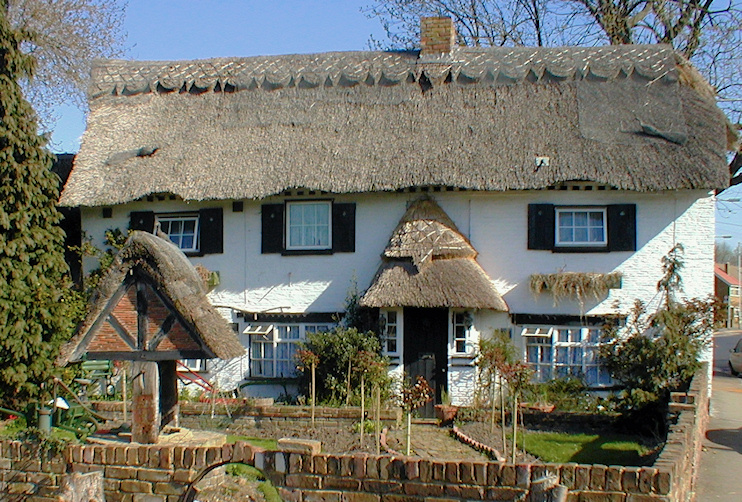Longford
Longford, Hillingdon
A village located at the north-western corner of Heathrow airport, one mile south-west of Harmondsworth

Longford’s name comes from an oblique crossing over the River Colne, and was for many years written – and pronounced – as two separate words. The village grew up as a halt on the Bath Road and had 30 houses by 1337, but development was limited by the susceptibility to flooding of the low-lying land.
Its waterside location made milling the dominant activity; from medieval times farmers brought corn, barley and wheat here. Paper mills came afterwards, and later still an associated printing works. The White Horse inn was in existence by the 17th century and survives today, together with a handful of houses and cottages from that period. Longford had a village shop by 1839.
The opening of the Colnbrook by-pass in 1929 and subsequent traffic exclusion measures and conservation area status have helped preserve Longford’s remarkably villagey character, despite quite a few intrusions from the late 20th century. To the east of the village there are several airport-related commercial premises.
The Longford River is an artificial watercourse that Charles I had constructed to provide water for the lakes at Hampton Court and Bushy Park. The course of the river was changed in the 1940s as a result of the creation of London (now Heathrow) Airport and was changed again with the construction of the fifth terminal.
On the west side of the village, Heathrow Special Needs Centre provides an environment in which people of all ages who have special needs and/or disabilities can be in contact with horses and farm animals. Visits are by appointment.
Nearby Longfordmoor is the westernmost place in Greater London. Moor Bridge has provided the link to Longford since the 15th century, while Mad Bridge crosses the Wraysbury River and leads to Poyle – now in the borough of Slough – where apple grower Richard Cox created the Orange Pippin around 1825. Longfordmoor found itself more isolated than ever following the construction to its south of the access road connecting the M25 with Terminal 5.
If the proposed construction of a third Heathrow runway goes ahead, the entire village of Longford will be erased from the face of the earth, sometime after 2021.
Postcode area: West Drayton, UB7
